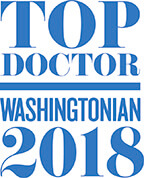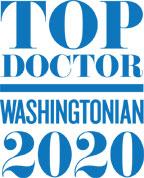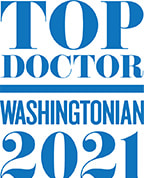When you have cataracts, they may not be noticeable at first. With age, cataracts are almost inevitable due to the natural lens becoming cloudy. When this happens, proteins in the lens can clump together, making it harder to see clearly.
Over time, the lens only becomes cloudier, leading to more severe visual symptoms. The good news is all these symptoms can be reversed through cataract surgery, a procedure that removes the natural lens and replaces it with an artificial one.
The artificial lens is known as an intraocular lens or an IOL. Traditional cataract surgery uses specialized surgical blades to do this. But laser cataract surgery has a more precise technique thanks to a state-of-the-art combination of lasers and computer software.
This combination is thorough and leads to optimal results for patients after the procedure. If you’re thinking about having laser cataract surgery, you may be nervous, which is entirely natural. Keep reading to learn more about what you can expect when you get laser cataract surgery!
The Procedure
These procedures won’t take all day to complete whether you choose to have traditional cataract surgery or laser cataract surgery! When you have laser cataract surgery, it’s only performed on one eye at a time.
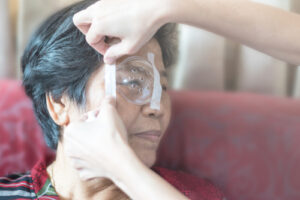
Yes, even if you have cataracts in both eyes, you will not have laser cataract surgery performed on both eyes simultaneously. This is to ensure you can still see while your first eye heals.
Laser cataract surgery only takes about 30 minutes and is performed as an outpatient procedure. In other words, this means you can go home after it’s over!
Even though you’ll be going home, you must have someone who can drive you home, as you won’t be allowed to drive the first day. Having laser cataract surgery only takes a few simple steps:
The Steps of Laser Cataract Surgery
- Before beginning, you’ll have your eyes numbed using eye drops. If you’re very nervous, you can request a sedative like Valium to help you relax and feel comfortable before the procedure starts.
- Before creating the corneal incision, your surgeon will use an ultrasound device to map the surface of your eye and gather pertinent information about your lens. This information is then sent to a computer that programs the laser.
- After programming the laser, your surgeon will create an incision in the cornea with the femtosecond laser. This laser is quite precise and makes an incision that’s small enough that it heals on its own after laser cataract surgery without the need for stitches.
- Your surgeon removes the front part of the capsule surrounding the natural lens. This capsule should remain partially intact as it will support the artificial lens after its implantation.
The femtosecond laser also removes the section of the capsule.
- The lens itself is softened and then broken apart using another laser. The pieces are then removed using suction with an ultrasound probe as they are small enough to fit through the incision.
- After removing the natural lens, the artificial lens gets implanted and inserted into the eye. There are many different kinds of intraocular lenses available, and this is something that you’ll choose before laser cataract surgery with your eye doctor.
After your IOL has been appropriately placed, the procedure is over!
Laser Cataract Surgery vs. Traditional Cataract Surgery
The primary differences between laser and traditional cataract surgery are the tools involved. Instead of a scalpel, laser cataract surgery uses a femtosecond laser to create the cornea’s incision.
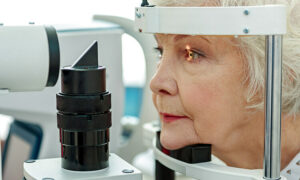
Traditional cataract surgery also uses an ultrasonic instrument to break the lens apart rather than a laser that first softens the lens. But the steps of the procedure are still the same. The lens is first removed and then replaced with an intraocular lens.
Using laser technology to perform the procedure allows the surgeon to program everything with an instrument that makes a detailed, 3D map of your eye. Having a 3D map of the eye allows for the possibility of less human error occurring.
The incision is made with the programmed laser rather than by hand. This alone allows laser cataract surgery to be more precise. This can be beneficial for several reasons.
Advantages of Having Laser Cataract Surgery
Laser cataract surgery has several advantages over the traditional form of cataract surgery. Because it’s more precise, there’s less room for error.
When it comes to removing the capsule with a femtosecond laser, it’s easier to make sure only part of it is removed. Removing part of the capsule also makes it easier to position the IOL while reducing the risk of capsule breakage.
While rare, mistakes can happen during traditional cataract surgery only due to the instruments used. Breaking apart the lens through ultrasound can also cause overheating that may warp the incision and shape the eye, causing a refractive error.
Astigmatism and LRI
If you have astigmatism, you can also have it corrected during cataract surgery. You can do this by combining a certain kind of IOL and something called Limbal Relaxing Incisions (LRI).

LRI are small incisions made around the eye that give the eye a rounder shape. By creating a rounder shape, it corrects the more egg-like shape associated with astigmatism.
LRI can be performed with traditional tools during cataract surgery. But with laser cataract surgery, these incisions can instead be implemented using a laser programmed with the same 3D mapping tool used during the rest of the surgery.
This leads to more precise incisions and better correction. For patients, it means better sight after laser cataract surgery and increasing their chances of no longer needing to rely on glasses.
Laser Cataract Surgery and Health Insurance

You need to keep in mind that laser cataract surgery may cost more than traditional cataract surgery. Cataract surgery is usually covered by insurance as it’s a medically necessary procedure for preventing or correcting blindness.
If you choose a standard IOL (a monofocal lens), then Medicare will usually cover it as well. But most insurance plans won’t cover the extra cost of laser cataract surgery.
Health insurance may cover traditional cataract surgery if medically indicated but it will not cover the extra fees associated with laser cataract surgery or specialty/premium IOLs. Both are considered elective services, meaning they are not covered by health insurance plans.
If you have cataracts and want to learn more about laser cataract surgery, the next step is a cataract screening. Schedule yours at See Clearly Vision in Arlington or Tyson’s Corner to discuss this incredible procedure and determine if laser cataract surgery could be right for you!
You’ve lived for far too long with the frustrating symptoms of cataracts. Now, it’s time to see clearly and live better than ever before!

